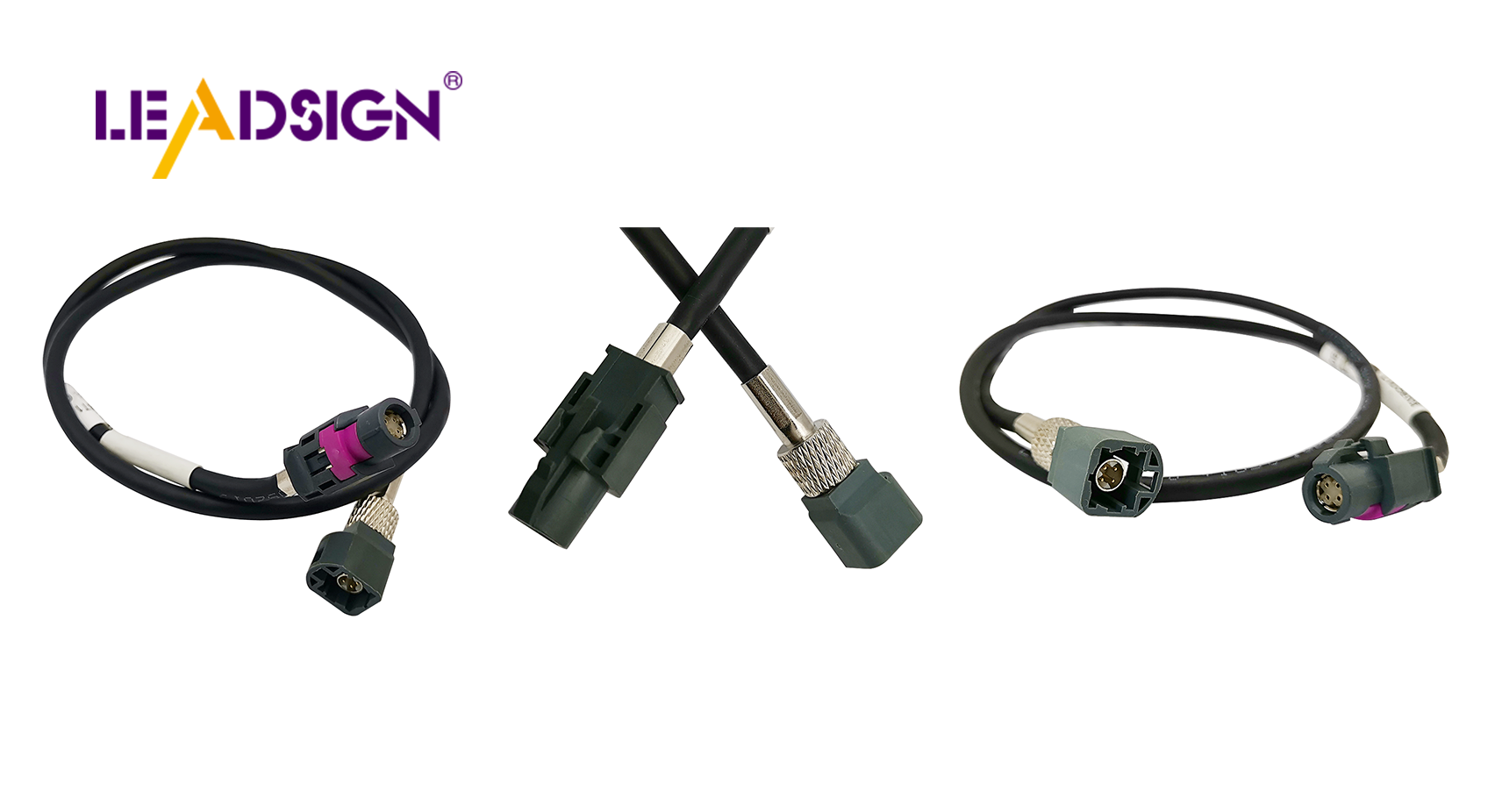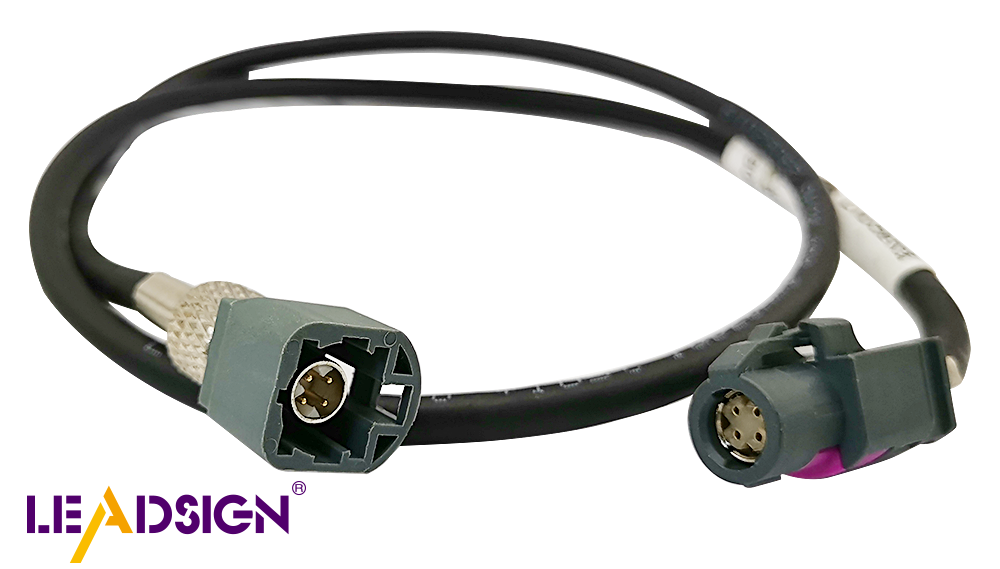Automotive Electrical Connectors Types: A Detailed Examination

Car electrical connectors are important parts in cars. They connect wires to make circuits work. These automotive electrical connectors types help car systems function well and safely. Choosing the right ones is key, especially for big trucks and buses. In 2022, they accounted for more than half of the market. More specialized connectors are needed now, particularly for electric cars. There are many kinds of these connectors, and each type is designed for a specific job, helping new cars run smoothly.
Role in Vehicle Systems
Automotive connectors are like the backbone of cars. They help power and signals move smoothly between parts.
Power Distribution
Connectors are key for sharing power in cars. They link terminals to make circuits, letting electricity go from the battery to car parts. This helps things like lights and radios work well. Automotive connectors can handle lots of power, so they are important for all cars, even electric ones.
Signal Transmission
Besides power, connectors help send signals. They let different systems talk to each other, like sensors and screens. This talking is needed for cool features like GPS and driver aids. As cars get more complex, we need connectors that can send data fast.
Key Features
Car electrical connectors need certain features to work well in vehicles.
Durability
They must be tough to last long. Connectors face vibrations, rust, and heat but must stay strong. Automotive connectors are built to handle these issues, especially in electric cars with high-voltage wires.
Compatibility
Being compatible is also crucial for car connectors. They come in many shapes and sizes for different uses, fitting into various car setups from gas engines to electric ones. By helping with communication and power sharing, these connectors keep modern cars running smoothly.
Detailed Look at different types
Car electrical connectors are very important. They help car systems work well and safely. Each type has a special job, making cars run better. Let's look at three common types: crimp, bullet, and spade connectors.
Crimp Connectors
Traits
Crimp connectors are strong and useful. They come in many sizes for big wires too. This makes them good for many car uses. Crimp connectors hold wires tight by squeezing them together. This stops wires from coming loose when the car moves. They send power and signals well, so they are liked by many.
Uses
Crimp connectors are used a lot in car wiring. They connect wires in engines, lights, and other key parts where strong links matter. They can handle lots of power, so they're good for sharing power around the car. They're also used when quick fixes or temporary setups are needed.
Bullet Connectors
Traits
Bullet connectors have a special design that makes connecting easy. They have two parts that fit together tightly for a good link. But you need a special tool to use them right.
Uses
Bullet connectors are used where wires need to be unplugged often, like lights or add-ons that change a lot. They're great for quick setups or places needing flexibility.
Spade Connectors
Traits
Spade connectors are simple but work well in cars. They look like forks and fit onto blocks or screws easily.
Uses
Spade connectors join wires to switches or relays in cars. They're easy to use and fit standard blocks, so both pros and hobbyists like them. They're handy where connections need to be secure but easy to remove, like fuse boxes.
High-Speed Data (HSD) Connectors
High-Speed Data (HSD) connectors are very important in today’s cars. They help with new car tech that needs fast data. These connectors are a type of automotive electrical connectors made for quick data movement.
Characteristics
HSD connectors have special traits making them good for fast data in cars:
Primary and Secondary Lock: HSD connectors have two locks. This keeps connections safe so they don’t come apart by accident when driving.
Crimp Connection: They use crimp links, which hold wires tightly together. This makes the connection strong, like many other automotive electrical connectors.
High Cable Retention Force: HSD connectors keep cables held tight. This is needed because cars shake and move, so connections must stay firm.
High Coding Efficiency: The plastic case has codes to stop wrong connections. Each connector fits only where it should go.
Applications
HSD connectors are used in many car areas, showing their wide use among automotive electrical connectors types:
Automotive Electronics: They help with electronics in cars, moving lots of data quickly. This includes things like camera feeds and USBs.
Digital Infotainment Systems: HSD connectors aid digital systems for music and videos, making entertainment better for riders.
Telecom Industries: Besides cars, they’re used in telecom places like radio stations because they handle fast data well.
Networking and Connectivity: They work with networks like Ethernet and Firewire. This lets them fit into digital networks easily.
Installation Techniques

Setting up automotive electrical connectors types right helps them work well and last long. Two ways to do this are crimping and soldering. Each way needs special tools and steps to do it best.
Crimping
Crimping is a common way to join wires in automotive electrical connectors types. It means squeezing a connector onto a wire for a tight fit.
Tools Needed
To crimp, you need these tools:
Crimping Tool: This tool presses the connector onto the wire.
Wire Stripper: It takes off the cover from wire ends.
Crimp Connectors: These are the parts that go on wires.
Steps to Crimp
Strip the Wire: Use the stripper to take off 1/4 inch of cover.
Put in Wire: Slide the bare wire into the crimp connector.
Place Connector: Put it in the crimper's jaws.
Crimp It: Press handles hard to lock it on the wire.
Check Connection: Look at it closely for any loose parts.
Soldering
Soldering makes a strong link for automotive electrical connectors types by melting metal.
Tools Needed
For soldering, you need these:
Soldering Iron: Heats up to melt metal on connections.
Solder: Metal that joins wire and connector together.
Wire Stripper: Takes off cover from wires.
Heat Shrink Tubing: Covers and protects soldered spots.
Steps to Solder
Strip Wire: Take off 1/4 inch of cover with stripper.
Tin Wire: Heat wire with iron, add some solder on it.
Insert Wire: Put tinned wire into connector hole.
Solder Joint: Heat joint, add solder until covered well.
Cool Down Joint: Let solder cool till it's solid again.
Cover Joint: Slide tubing over joint, heat it till snug.
Both crimping and soldering help set up car connectors right. Each has its own perks, depending on what you need done.
Common Problems and Fixes
Connector Breakdowns
Automotive electrical connectors can break, causing car troubles. Knowing why they fail and stopping it is key for good car performance.
Reasons
Connectors can break due to:
Wrong Setup: Bad crimping or soldering makes weak links. If wires aren't put in right or cut wrong, the connector won't work well.
Physical Harm: Misaligned parts, broken pins, or stress marks happen from rough use or accidents. These harms can mess up connections.
Weather Effects: Water, heat, and shakes wear out connectors over time. Water especially causes rust and weakens links.
How to Stop It
To stop connector problems, try these tips:
Correct Setup: Use right tools and follow maker's steps for crimping and soldering. Make sure wires fit right and are cut properly.
Check Often: Look at connectors for damage signs. Regular checks find issues before they cause trouble.
Weather Shielding: Use sealed connectors where there's water or dust. This stops weather from hurting them.
Care Tips
Regular care keeps automotive electrical connectors working longer and better.
Check Often
Checking often is key for keeping connectors healthy:
Look Over Them: Spot any wear, rust, or harm. Check if parts fit well and pins are okay.
Test Them Out: Ensure they send power and signals well by testing them. This finds hidden problems.
Cleaning Ways
Keeping them clean helps them work right:
Dry Clean Up: Use a soft brush or air to clear dust off connectors. Don't use water that might cause rust.
Contact Cleaner Use: Apply special cleaner for electric parts to remove rust and boost flow of electricity.
By knowing common problems and using these fixes, car owners can keep their automotive electrical connectors reliable. Regular care reduces breakdowns, boosting car safety and performance.
Picking the right connectors is very important for car safety and performance.
See Also
Understanding HSD Connectors for Automotive Applications
Advantages of Using Fakra Connectors in Vehicles
Significance of FAKRA Connectors in Automotive Use

